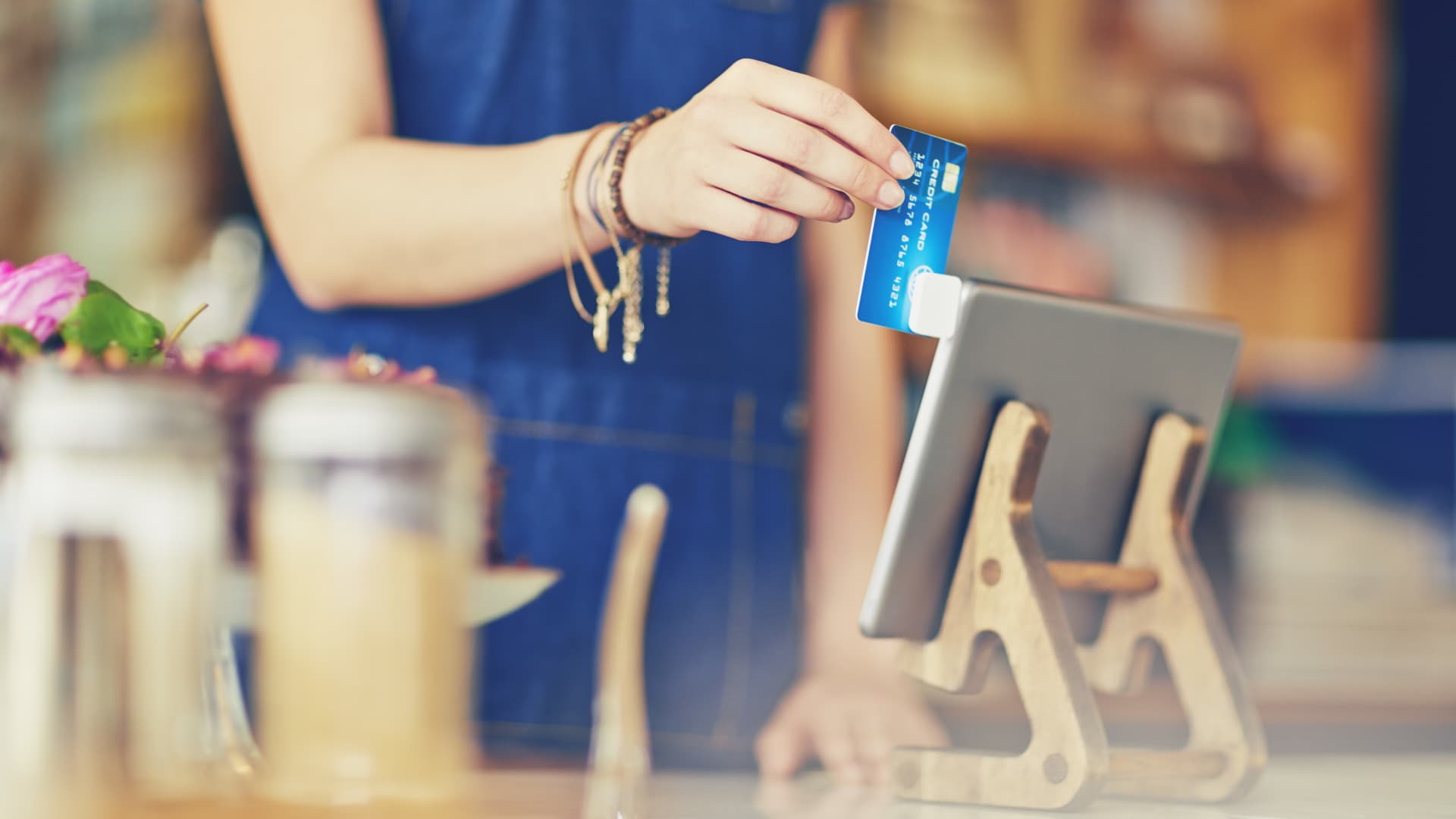Americans tip more often now — but it’s not always coming from the heart.
As touch screens and pre-selected options make tipping more convenient, around 60% of Americans say they’re tipping more, according to a recent LendingTree survey.
However, many are only doing so because they feel forced to.
Guilt tipping, explained
Nearly a quarter of people say they always feel pressured to tip when the option is presented, according to LendingTree’s survey. And 42% say they sometimes feel pressured.
If this sounds like you, you may be guilt tipping.
“If seeing the tip options pop up on the payment terminals gives you anxiety or stresses you out, you may be wrestling with guilt tipping issues,” Matt Schulz, LendingTree’s chief credit analyst, tells CNBC Make It.
“It’s happening all over the place, and people are getting increasingly tired of it,” he says.
Thanks to relatively new contactless and digital payment prompts that allow businesses to pre-set suggested tip levels, it’s easier than ever to ask for tips, and even companies that haven’t done so in the past are doing it, says Schulz.
“People don’t want to feel like a jerk or cheapskate,” he says. “Businesses are taking advantage of that fact by making bigger-than-usual tips the default options on many of these payment terminals, hoping that customers will just go ahead and pay the extra amount rather than hassling with clicking ‘custom tip’ and entering a smaller number.”
It’s worth noting that the business doesn’t always decide which tip options you’re presented with. Since the companies behind the payment systems can earn money from each transaction, they have an incentive to increase those amounts as much as possible, says Dan Egan, vice president of behavioral finance and investing at Betterment.
But those tip screens may be having the opposite effect. Nearly 20% of people tend to tip less or not at all when presented with a pre-entered tip option, according to a June survey from Bankrate.
“While Americans generally don’t have any problem with tipping as a whole, many people feel that businesses are going a little bit too far in what they’re asking for,” says Schulz. “Life is expensive enough in 2023 and budgets are already crazy-tight.”
What’s driving tipping anxiety
Traditionally, tips were thought of as a a way to reward good service after receiving the service or product you’re paying for, says Egan.
However, new payment options that ask customers to tip beforehand has flipped that notion on its head.
“The fear is that now you’ll get punished for a low tip rather than the server being rewarded for giving really good service,” Egan says.
That has left some people feeling like they don’t know how much to tip anymore. About 15% of people say they’re confused about how much to tip and who to tip, according to Bankrate’s survey.
There used to be a general understanding of what different tip amounts convey to servers and workers, says Egan. “It used to be a 10% tip meant, ‘Hey, it wasn’t horrible, but it’s it wasn’t great either,’ 15% was normal and 20% meant the person did an excellent job.”
But pre-selected tip options can make people question those assumptions and leave them unsure of what their tip is communicating.
Say you’re presented with the option to tip 20%, 25% or 30% at checkout. Although you may believe that tipping 20% tells the worker ‘you did a really good job’, the worker may not receive it that way because you selected the smallest amount, Egan says.
“There’s this very awkward social component to it,” he says. “There’s this level of not knowing what the realm of correctness is anymore.”
Although tipping is a personal choice, etiquette experts say it’s still standard to tip 20% at full-service sit-down restaurants.
Regardless of industry, if you’ve experienced great service from someone and you’re feeling generous, go ahead and tip the person, Diane Gottsman, founder of The Protocol School in Texas and a nationally-recognized etiquette expert, told CNBC Make It in July.
However, you don’t necessarily have to tip every time you’re prompted.
“I never want to discourage a tip, but if you have a six-second exchange — you ask for a cup of coffee, they turn around, pour it from the spout, and hand it to you — that is discretionary,” she said.
DON’T MISS: Want to be smarter and more successful with your money, work & life? Sign up for our new newsletter!
Want to earn more and land your dream job? Join the free CNBC Make It: Your Money virtual event on Oct. 17 at 1 p.m. ET to learn how to level up your interview and negotiating skills, build your ideal career, boost your income and grow your wealth. Register for free today.
CHECK OUT: Just 65% of Americans always tip at restaurants—etiquette experts on what we get wrong about tipping
This story originally appeared on CNBC

